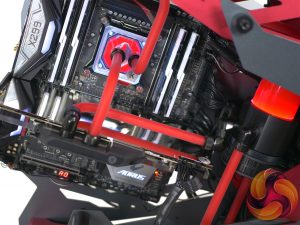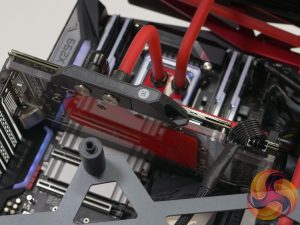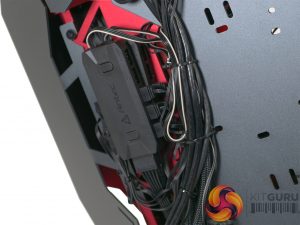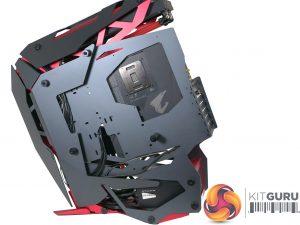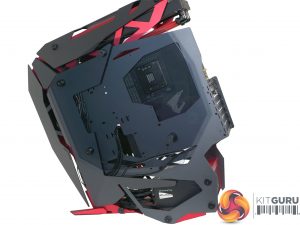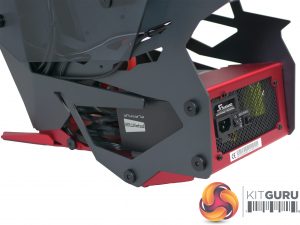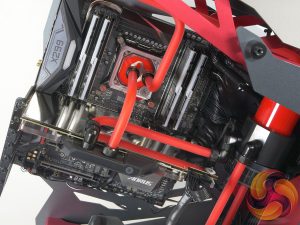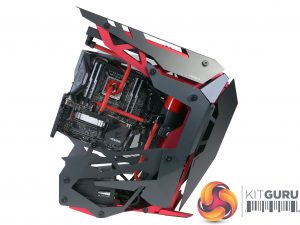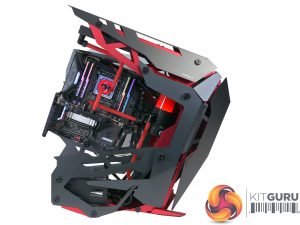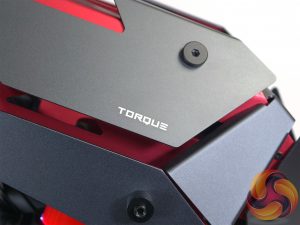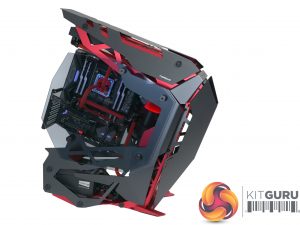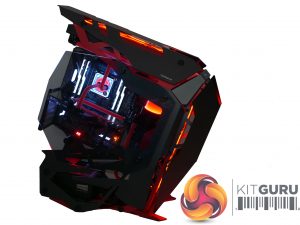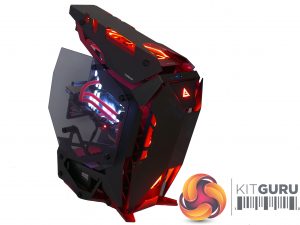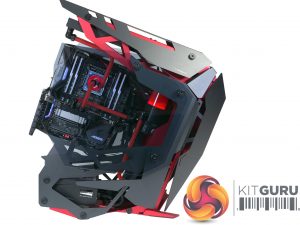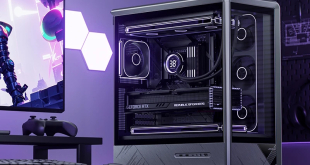The time we spent working with Torque reinforced the point that this isn’t really a PC case in the conventional sense. Sure you can install a motherboard, graphics card and power supply but there isn’t much separation between the inside and outside. The way the various components screw together is also unusual as you take the red core chassis, attach some stand-offs, attach two of the grey panels, add the top and front covers and then finish off with the two glass side panels.
Towards the end of the video, once the cooling loop was complete, yours truly managed to install the top cover back to front and we were completely unaware until a viewer posted a comment after the video went live on YouTube. When you stand back and take a long, slow look the error was obvious but working up close it completely passed us by. In case we need to reiterate, this is an unusual PC chassis!
The specification of Torque allows you to install pretty much any motherboard or graphics card that you choose with support for 360mm radiators in the roof and at the front. You can install radiators of any thickness you choose, however the cooling system is limited to units of 120mm. It would surely have taken little extra work by the factory to support 140mm but the way the aluminium has been formed means that wider radiators are out of bounds.
It is also worth noting that cable management is hard going. If you wish to conceal your cables it is essential you route them behind the grey aluminium panels, however these panels have a number of large holes that make life difficult. In addition there is very little clearance behind the panels which adds to the difficulty.
With our test system built we were confident that cooling would be exemplary as there are no restrictions to air flow, but seeing is believing so it was time to fire up a stress test.
 KitGuru KitGuru.net – Tech News | Hardware News | Hardware Reviews | IOS | Mobile | Gaming | Graphics Cards
KitGuru KitGuru.net – Tech News | Hardware News | Hardware Reviews | IOS | Mobile | Gaming | Graphics Cards


